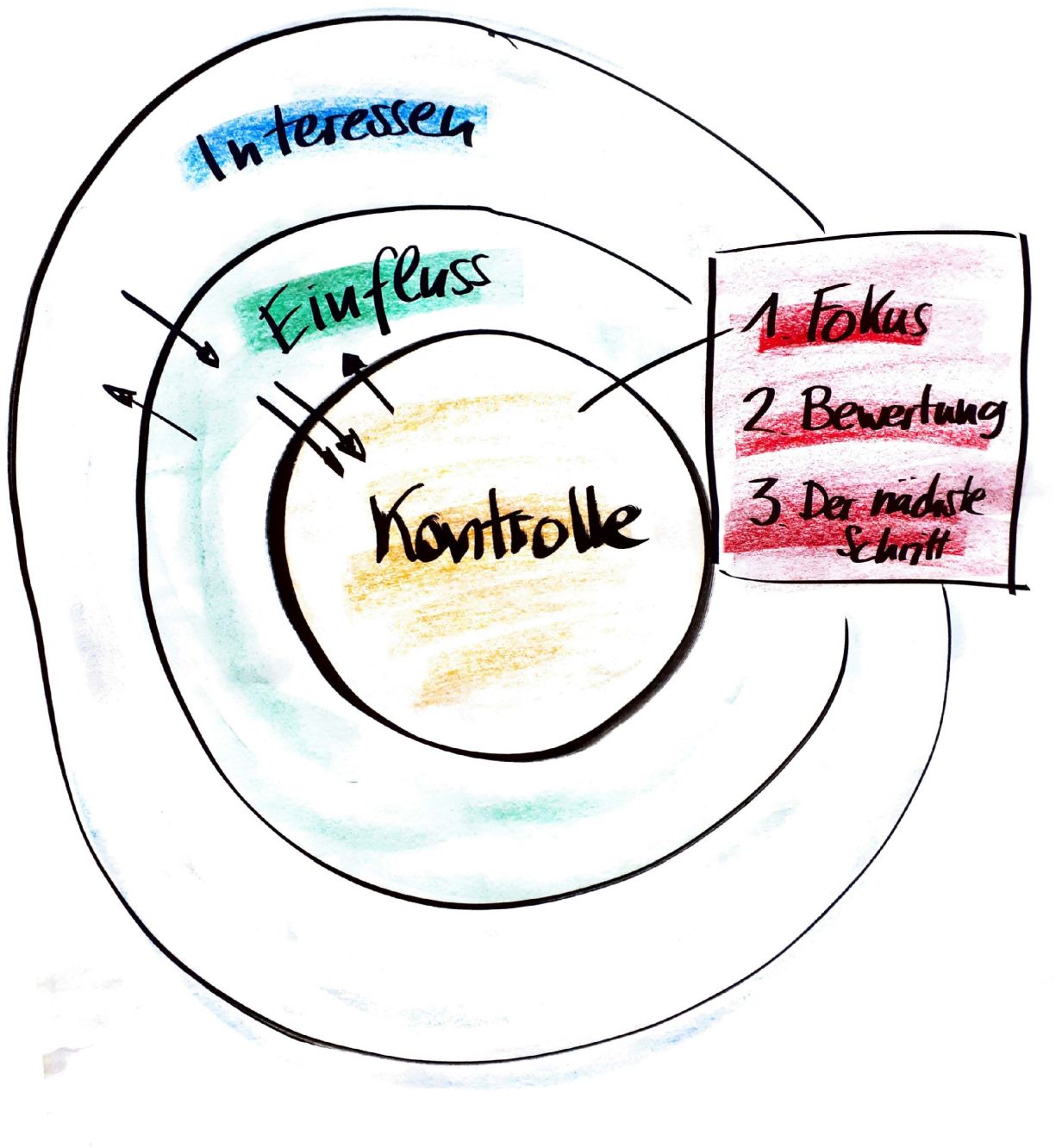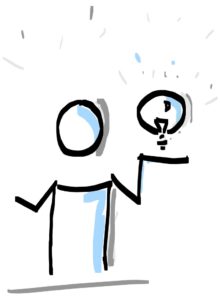Peole like to be safe. That’s why we often try to be in control as much as possible. Is this a good strategy or just an illusion?

In order to clarify whether and to what extent control is a really effective strategy, it is helpful to use a sphere model that divides people’s scope of action into the areas of control, influence, and interests:
1. Control
The control sphere is the core of sovereign individual action, the kingdom of the individual, so to speak. This is where everyone is free to think and decide at all times what he or she wants and believes to be right. /1/
By acting within their sphere of control and how they do so, people influence their environment and what happens around them. However, people only ever manage to do this indirectly through impulses sent to the neighboring sphere of influence.
The goal is always that things develop in such a way, as humans wish it. Example: ” This year, I want to go to Iceland for vacation!”.
2. Influence
The area of influence is the direct neighbor of the control area. And from there it is also permanently ” worked on “. (“Honey, what do you think about a trip to Iceland? That would be a nice change.”)
Since usually several people and institutions are adjacent to the same sphere of influence, a mutual social dynamic develops, which is appropriately described as “complex”.
Because the sphere of influence reacts to the impulses and takes in turn influence on the neighboring (control) areas of the respective participants. (“Iceland? Why not actually? Yes, that would be nice.” – “What?! Iceland?! Mom, Dad, you promised us last year that we go to Italy to the beach! Iceland forget it!”) /2/
3. Interests
Outside the sphere of influence is the area of interest, which provides the general framework for the dynamics of control and influence.
What happens here has great significance and often even concrete effects on the lives and opportunities of individuals. Without, however, being able to influence this area directly, immediately, or at all on their part. (An example of this is the surprising eruption, for example, of the Icelandic volcano Eyjafjallajökull, which can prevent a planned vacation trip.)
If there is a possibility for individuals to change something in the sphere of interest, this will always succeed only indirectly: Through actions from the sphere of control and the “bridge” of influence.
So can one gain high levels of certainty through as much control as possible?
There seems to be little that we can directly control. Actually, it’s just these three steps:
1. Choice of Focus:
What are we looking at in the current moment? What are we focusing on (now)? Is it really that important (now or in general) that we should be bothered with it?
2. Evaluation:
How do we evaluate what we are seeing, hearing, experiencing right now? Is it so important in the short, medium, and long term that we should spend time and energy on it?
3. Next step:
What are we doing now, within our means, to influence the course of events so that they develop in our favor in the short, medium and long term?
 These three steps may seem few.
These three steps may seem few.
But they are powerful.And they are our only chance to live our full freedom of choice and succeed with the utmost certainty. That’s why it makes sense to take these steps as best we can. That is, as mindful, aware and focused as possible.
Notes
/1/ Provided that the individual and, for example, by experience shaped psycho-biological automatisms and patterns allow this.
/2/ By the way, always with an open outcome. What exactly happens here cannot be predicted because of the many different participants and options. Simply complex.
Literature
/1/ Hoodguin, Lex: Decision Making in a Complex World. MOOC-Kurs (Futurelearn.com), University of Groningen: https://www.futurelearn.com/courses/complexity-and-uncertainty
/2/ Hüther, Gerald: Biologie der Angst. Wie aus Streß Gefühle werden.
/3/ Johner, Philipp: Transforming leaders. Top-Management und Transformation. So werden Sie nachhaltig erfolgreich, steigern die Mitarbeiterzufriedenheit und sparen Kosten.
/4/ Eyjafjallajökull – Wikipedia
 These three steps may seem few.
These three steps may seem few.